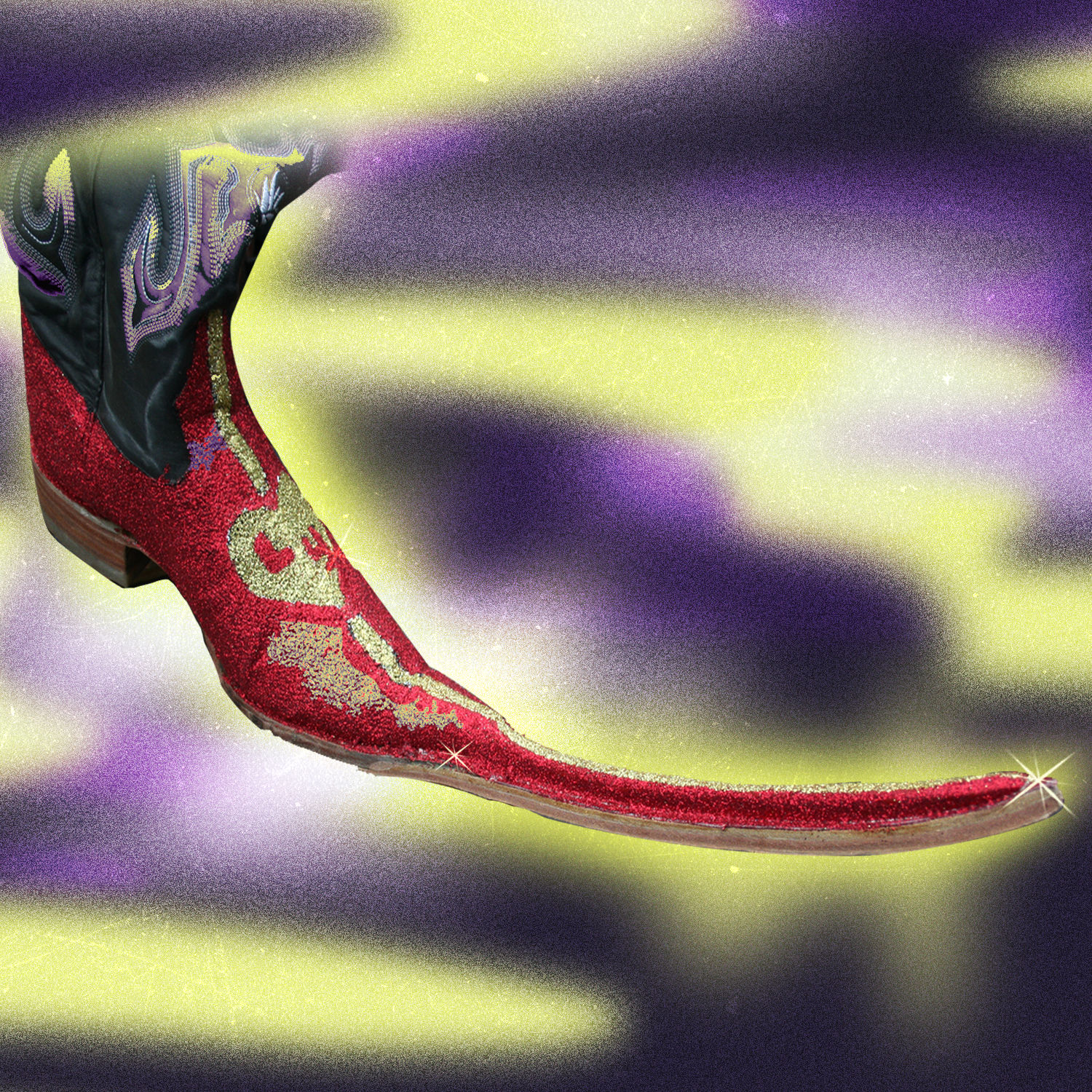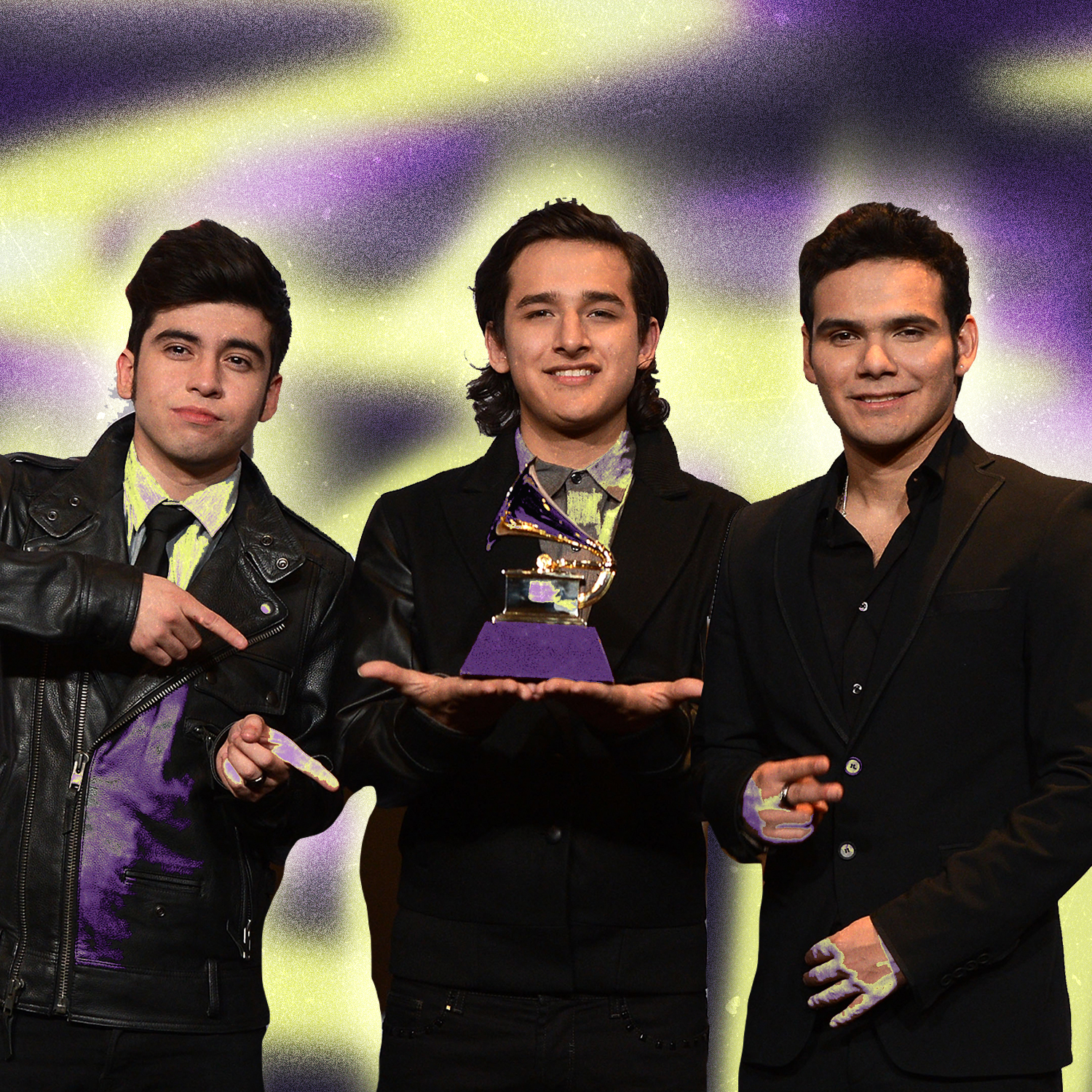In 2012, the Billboard Latin charts were defined by bachata giants like Romeo Santos and Prince Royce, along with pop veterans like Maná and Gloria Estefan. So when “Inténtalo” climbed to the top of the charts on March 10, it looked like it came from outer space. It sounded like a highly original digital mashup of cumbia, norteño, house, and other rhythms. The video was even more perplexing, featuring 3BallMTY, who looked like they were barely in their teens, and two up-and-coming Regional Mexican singers. More memorable, there were also a few young dancers wearing the pointiest boots you could imagine. In short, it looked like a new genre had been born right in front of our eyes.
Except it didn’t. Bachata, reggaeton, and legacy pop and rock artists continue to rule the charts. For many, 3BallMTY were just one-hit wonders and part of a ridiculous fad. Ten years later, their sound is enjoying a new life both on TikTok and in underground circles. As of 2022, tribal guarachero is fulfilling its promise and becoming the sound of the future.
3BallMTY started with three teenagers from Monterrey. The group was formed in 2009 when three DJs from Monterrey decided to join forces in a collective. “I first heard the genre in 2007, maybe 2008, right when I started DJing,” Sergio Zavala, better known as Sheeqo Beat tells Remezcla. Together with Alberto Presenda, aka DJ Otto, and Erick Rincón, they formed 3BallMTY. “I used to go out to a club called Arcoiris, a legendary place. Back then, tribal was much more electronic and had prehispanic influences, flutes and such. People like DJ Mouse and Manuel Palafox and other DJs from Mexico City.”
Indeed, the first tribal song is attributed to DJ/producer Ricardo Reyna, who was inspired by danzantes in Mexico City’s Zocalo. Reyna’s 2004 breakthrough song “Danza Azteca” featured some essential elements of the style, like all electronic instruments, triplet hi-hats, incessant kick drum, and unusual melodies. However, the tribal guarachero sound needed other elements to become the force of nature it became.
For the last five decades, Monterrey has had a special love for Colombian cumbias, with DJs remixing them into “rebajadas,” chopped and screwed-like versions. 3BallMTY and their contemporaries mixed tribal with this influence to birth the tribal guarachero subgenre, the best-known version of tribal. “We ended up being the new generation,” says Sheeqo.
The genre found its audience in the aforementioned Arcoiris Club. Gathering up to four thousand people on Sundays, this is where the new sound first became popular, with the three DJs of 3BallMTY and other exponents like DJ Cobra and El Pelón del Mikrophone holding court in the DJ booth. People would download their tracks and share them with friends and family in other parts of the world on social media platforms like MySpace and Fotolog, and soon parties would coalesce in different cities.
We had silly childish ideas, like we thought tribal should remain underground, and we were skeptical about adding love lyrics to our music
Another aspect where tribal guarachero made its mark was through fashion. Tribal has become permanently tied to the image of impossibly pointy boots that would curve to the wearers’ hands. Contrary to popular belief, this was not the fashion in tribal parties in Monterrey. Instead, they came from Matehuala, San Luis Potosi. “From what I understand, we share some spirit with those people,” Sheeqo comments. “They were looking to make their own style to express themselves, like us with music. We had played some shows in Matehuala [where] they even had tribal dancing and boots-styling contests. I think it was very important for the development of tribal to have that fashion attached to it. It’s weird, but it worked. We always wanted to establish them as the originals.”

After just a few months of playing together, they started to turn heads. Former Control Machete DJ Toy Selectah heard music from a booth at a flea market in Monterrey — a CD with “música arco,” named after Arcoiris Club featuring the acts that played in said venue. He then messaged 3BallMTY on MySpace with a simple proposal: “Are you ready to take the next step?”
Toy recorded their first collection of songs, an EP, with which they made appearances at festivals in Germany, Portugal, and many other countries. It was in Portugal where Sheeqo, Erick, and Toy worked on a beat that had potential. After signing to Latin Power Music (a subsidiary of Universal Music), the label proposed inviting vocalists to add hooks to the songs. Namely, the recently signed Regional artists América Sierra and El Bebeto. Before this, tribal was strictly instrumental. But the result, “Inténtalo,” transformed 3BallMTY from an electronic outfit into a Regional one — the pop crossover was a matter of minutes.
It took a bit for the members of the collective to assimilate their new status as part of the pop landscape. “We had silly childish ideas, like we thought tribal should remain underground, and we were skeptical about adding love lyrics to our music,” says Sheeqo. “But then we saw that the record label was happy with the results and [we] shifted perspectives. We didn’t realize how big it could become until we uploaded the video and saw it was getting 15 thousand views each hour.”
They couldn’t understand what was happening. “We had dates and tours. Then we were on Billboard, Coachella, the Latin Grammys. We thought that was what up-and-coming bands and artists did! We thought it was normal,” he shares. Indeed, they played a packed stage in Coachella and snagged a Best New Artist Latin Grammy and the No. 1 spot on the Billboard Latin Songs chart for two non-consecutive weeks.
Interviewed for a feature of the genre in the Fader in 2010, Toy Selectah envisioned a future where tribal would become part of the mainstream. “In two or three years, there’ll be tribal guarachero singers and MCs and songs with the rhythm. My head spins thinking that we should be doing it!”
However, this didn’t happen.
Tribal guarachero failed to produce any successors to 3BallMTY — at least in the charts — and few big artists ventured to the sound. Just a few years after its commercial peak, the picudo fashion style and the sound of tribal became dated fads. Even 3BallMTY failed to follow up the success with their second album, Globall, which featured bigger stars as guests like Becky G, Li Saumet of Bomba Estéreo, Gerardo Ortiz, Belinda, and “Inténtalo” collaborators América Sierra and El Bebeto. No single came close to matching the impact of “Inténtalo.”
It’s an established party song. People play at weddings and 15 años. It’s a song that has transcended to the Mexican and Latin families.
“We had pressure to follow up our hit,” says Sheeqo. “We knew the monster we had unleashed. [Globall] was ahead of time because we didn’t want to repeat ourselves, so we tried different things, like mix tribal and reggaeton or banda or hip-hop. If we released it further down the line, it would have caught on.”
In essence, they were trapped in their own genre. “Our name didn’t help,” says Sheeqo. “Back [in the Arcoiris Club days], we played tribal but also house, cumbia, and more music. But then we got defined by tribal and we couldn’t shake it off.” They consciously moved away from the sound and image of tribal to cement themselves as one of the premier Mexican EDM acts worldwide, playing on the genre’s biggest festivals while keeping their experimental instincts sharp. Ultimately, Rincón left the group a few years later, leaving Sheeqo and Otto as sole members, who slowed down the project in recent years. However, Sheeqo says it’s time to reactivate the group beyond sporadic collaborations and festival sets.

Far from the mainstream, tribal guarachero prevailed. In the hands of underground artists such as Siete Catorce, Javier Estrada, and more, the sound became fodder for experimentation. It was adopted by many producers of the NAAFI collective, as well as Nguzunguzu, Buraka Som Sistema, and many other DJs and dance producers. Electronic producer Debit, who has experimented with the subgenre, first heard tribal in her hometown of Monterrey around 2011. “I found it incredibly innovative but also familiar,” she says about the mix of regional and electronic music. “I think it lends itself to experimentation because there are so many places to go. I also think it being deemed a ‘low-brow’ genre within electronic music by cultural snobs makes it automatically important to protect and perpetuate.”
Sheeqo Beat looks back to “Inténtalo” with fondness. “It’s an established party song. People play at weddings and 15 años. It’s a song that has transcended to the Mexican and Latin families.” And of course, “Inténtalo” has found a second life on TikTok. Debit sees a bright future for the sound. “We will continue to see innovation and new aspects of it we have yet to imagine. Tribal will never go away; I just can’t wait to continue to see its evolution and dialogue with other genres and contexts,” she says.
As for the lasting influence of the song as an avant-garde genre, Sheeqo comments. “A lot of producers write to me to show me what they have done with tribal. I love what they have done in Colombia with Farruko’s ‘Pepas.‘ I love that it continues to be present. I think it will continue down that path. It’s a great legacy to have.”







